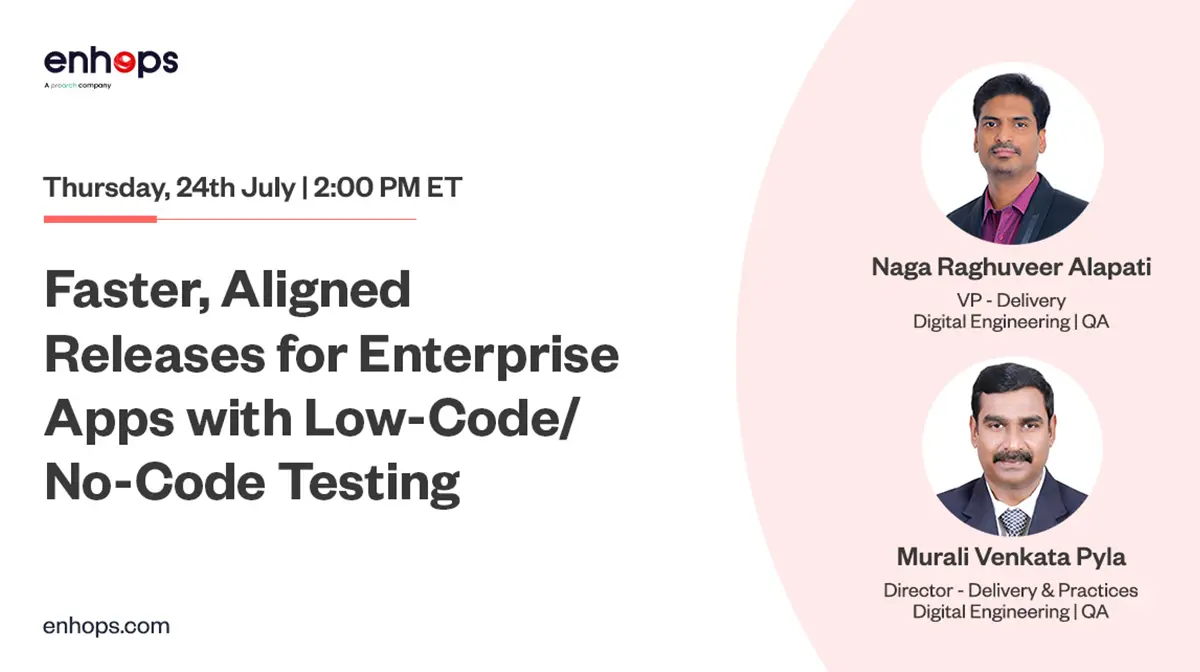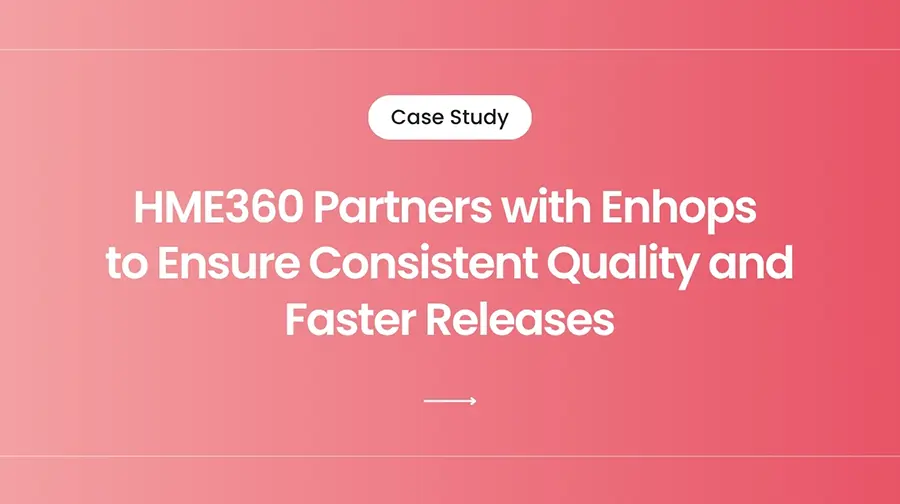How often do you review your test automation strategy? Are you fully leveraging new testing tools? What training and learning programs are required for your manual testers to achieve automation skills? How much has your test automation maturity improved over the last year? And what kind of business metrics are you tracking to estimate test automation success?
These are all common questions for any quality engineering or QA organisation that may be difficult to answer. But obtaining the answers often requires deeper insight into your testing function, your tooling, your people, and your processes. That’s where a dedicated functional unit – a Testing Center of Excellence (TCoE) – comes into play.
In this post, we will discover what is testing center of excellence, why leading organisations are building them, and how establishing testing center of excellence can help organizations in getting answers concerning all parts of software testing lifecycle:
What is a Testing Center of Excellence?
A Testing Center of Excellence (TCoE) is an organized function within any organization that helps in achieving standardization across test processes and activities while helping teams to utilize their resources optimally. It assesses need of implementing new tools, technologies, and frameworks for achieving excellence in testing functions. It promotes innovation to improve the release lifecycles and quality of digital applications.
The purpose-built Testing Center of Excellence implies deciding on business KPIs and metrics that will help in achieving business objectives like improving customer acquisition rate, decreasing customer churn rate, increasing customer lifetime value, and more.
Signs that you need a Testing Center of Excellence
Here are a few signs that your organization needs a Testing Center of Excellence. If anyone or combination of these signs are present, talk to us to get started you with a quality transformation journey.
- Your organisation uses software to serve and delight customers and you cannot rely on outdated manual testing methods any longer.
- The business is growing rapidly and you cannot afford software quality issues or production defects.
- You have frequent software releases (weekly or monthly) and your current testing cycles are becoming a bottleneck.
- Your testing is still mostly manual and/or scattered across teams in silos.
- Automation efforts are isolated (e.g., in just one team) and not yielding organisation-wide results.
- You want to upskill your test engineers in automation, innovation and modern quality engineering practices.
If any of these apply, it’s worth exploring how a TCoE can help accelerate your quality transformation.
Common challenges for teams if testing is not standardized and How TCoE can solve them
-
Inconsistent documentation
When test cases are created in isolation, using distinct tools, formats, and assumptions—teams end up in confusion. The result is misalignment, duplicated effort, and resulting delay in releases.
Solution – TCoE brings alignment by introducing standardized templates and human feedback in the loop—so teams aren’t just delivering faster, they’re delivering together. It aligns QA with strategic business outcomes, not just bringing clarity, accountability, and leadership-level visibility across the organization.
-
Lack of traceability
If test cases don’t map back to requirements and those mappings aren’t visible or tracked by the QA team, coverage becomes speculative. QA leads can’t confidently determine what was tested, where the risks are, or whether the product is release-ready or not.
Solution – TCoE introduces a traceability-first mindset, with matrices like – Requirement Coverage, Test Case Traceability, Defect Traceability, and Test Run Traceability to link every requirement to its corresponding validation. This ensures you’re not just testing more—you’re testing the right things.
-
Compliance and reporting become stressful
When testing processes vary from team to team, reporting becomes a last-minute decision. There’s no single source of truth for what was tested, what passed, or why something was approved. This puts QA leads in stress—especially during audits, it becomes nearly impossible to show the ROI of testing efforts.
Solution – TCoE brings metric-based monitoring to the forefront. Implementing TCoE, you can have clear insight about QA Cost per Release, Defect Density in Production, Average Time from Code Complete to Release, Test Maturity Score, and Test Execution Efficiency. It gives QA teams the required data they need to continuously improve—and offers executives the clarity they demand.
-
Lengthy Testing cycles
In a decentralized setup, every project reinvents the testing process. Teams use various tools, follow distinct test plans, and spend valuable time solving the same problems repeatedly.
Solution – With a TCoE in place, organizations benefit from shared common tools, reusable frameworks, and automation strategies that shorten test cycle times—without compromising quality. Studies show teams see up to 30% faster test execution once standardization is fully adopted.
-
Unstructured Knowledge Management
When testers operate in disconnected environments, test artifacts, processes, and best practices aren’t shared, so adoption of standard testing methods gets disrupted.
Solution – TCoE can fixes this by creating a structured knowledge ecosystem: centralized repositories, versioned templates, reusable test assets, and a continuous improvement loop that helps teams scale while maintaining control.
For Free PoC of your TCoE roadmap
How to establish a Testing Center of Excellence
Establishing and running Testing Center of Excellence successfully can be an uphill task. Often, organizations start quality engineering initiatives that get stalled by day-to-day operations. Establishing Testing Center of Excellence means having a dedicated functional unit that keeps a tab on quality aspects while taking care of innovation and implementing new tools and technologies –
- Define vision, goals & business alignment. Start with clear business objectives: e.g., “reduce time-to-market by 20%”, “increase automation coverage to 70%”, “cut defect leakage by half”. The TCoE must tie directly to these outcomes.
- Get buy-in from C-Suite – Although TCoE brings in great benefits, it’s also a significant and up-front one-time investment in terms of time and resources. It is important to run a detailed plan of cost and benefits with senior management and take their inputs to ensure you have right resources and time to start the process.
- Outsource TCoE program – A TCoE is only as good as the people who work to establish and run it. Most organizations don’t have in-house skills and resources to start the testing center of excellence. Establishing testing center of excellence require experienced team of professionals who bring in expertise defining and execution QA strategy, approach, and execution. It is recommended to work with quality engineering experts that can own QA and Test Automation initiatives, automation tools development and engineering best practices.
- Start small and scale up – It is important to understand that automation and quality engineering practices need to approach in a phase wise manner by starting small pilot projects and apply learnings to scale them. As you gain experience, TCoE and its practices can be scaled up to meet needs of any organization.
- Deploy shared tools, automation frameworks and knowledge base. Define approved tools, build reusable automation assets, maintain central repository, and define standard metrics and dashboard.
Download our eBook on Testing Center of Excellence to understand how it can elevate your testing function.
Key metrics & business KPIs for your TCoE
To demonstrate value and drive adoption, your TCoE should track metrics that link back to business outcomes. Sample KPIs include:
- Automation coverage (% of test suite automated)
- Time from code complete to release (test cycle time)
- Defect density in production (number of defects per release)
- Number of critical defects found post-release
- QA cost per release
- Test execution efficiency (tests run per day / tester)
- Test maturity score (a composite metric of process, tools, people)
- Rate of training completion / upskilling of QA staff
- Customer-impact metrics (e.g., reduction in churn, increase in user satisfaction)
By tracking these metrics, your TCoE becomes a business-aligned unit, not just a function buried in QA.
Outcome Based Testing Center of Excellence
For any organization, quality has become the main differentiator. From adopting new technologies to modernizing their core legacy platforms, it’s important to make sure that end-users receive the best experience across all channels. This requires more progressive and iterative approaches to achieve required quality that can significantly mitigate the risks while upgrading core legacy programs or migrating applications to cloud.
Put simply, the time to get hold of your quality engineering initiatives is now.
Testing Center of Excellence can be one of the initiatives for organizations to achieve their quality engineering goals. But executing and implementing testing center of excellence is no easy task. The success stories of testing center of excellence are far outnumbered by the failures. These failures might look like programs that overran, overspent, performed poorly and ultimately failed to achieve real outcomes.
At Enhops, we suggest and work with clients on a strict and SLA based governance model that helps in keeping track of initiatives running under testing center of excellence and results. By introducing outcome-based testing center of excellence program, organizations can mobilize all cross-functional teams around business outcomes and not sprints or deliverables.
We also focus on leveraging value-focused best practices for enterprise agile methodologies and onboarding industry approved tools and frameworks in test automation space. Additionally, this means introducing training and capability building initiatives. With this, we put proper communication machinery and strong governance program in place for faster and timely feedback and agile decision making.
Testing is not a usual business now; it requires strategy and planning
Quality is no more an after-thought. Business leaders are increasingly realizing the importance of paying attention to quality programs. A Testing Center of Excellence can be a powerful lever for organisations seeking to scale test automation, improve quality, reduce cost and deliver business value.
If you’re ready to build or refine your TCoE roadmap, connect with us for a free proof-of-concept or consultation. Let’s make quality your competitive advantage.
Want to prep your business case for Testing Center of Excellence? Talk to us – marketing@enhops.com




